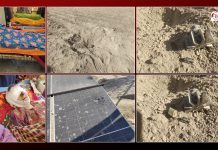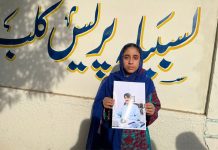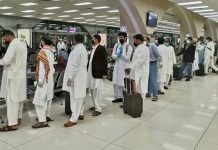Pakistan has built a hardened, secured, underground complex in Balochistan to serve as a ballistic missile and nuclear war-head storage site, an American think-tank reported yesterday.
The underground complex has been constructed near a ballistic missile base, which was identified in 2016 by Hans Kristensen of the Federation of American Scientists (FAS).
American think-tank, The Institute for Science and International Security, has reported that the site has three different entry points and support area. The complex is built in Kirthar mountains, which are a mountain range bordering Balochistan and Sindh. The mountains extend southward for about 190 mi (310 km) from the Mula River near Khuzdar.
The think-tank first started investigating the site after a journalist provided them the coordinates of the area.
Although the site is located in Balochistan, which has been marred by different insurgencies, it lies far away from any international borders and serves as a secure area in remote mountainous region, the think-tank reported.
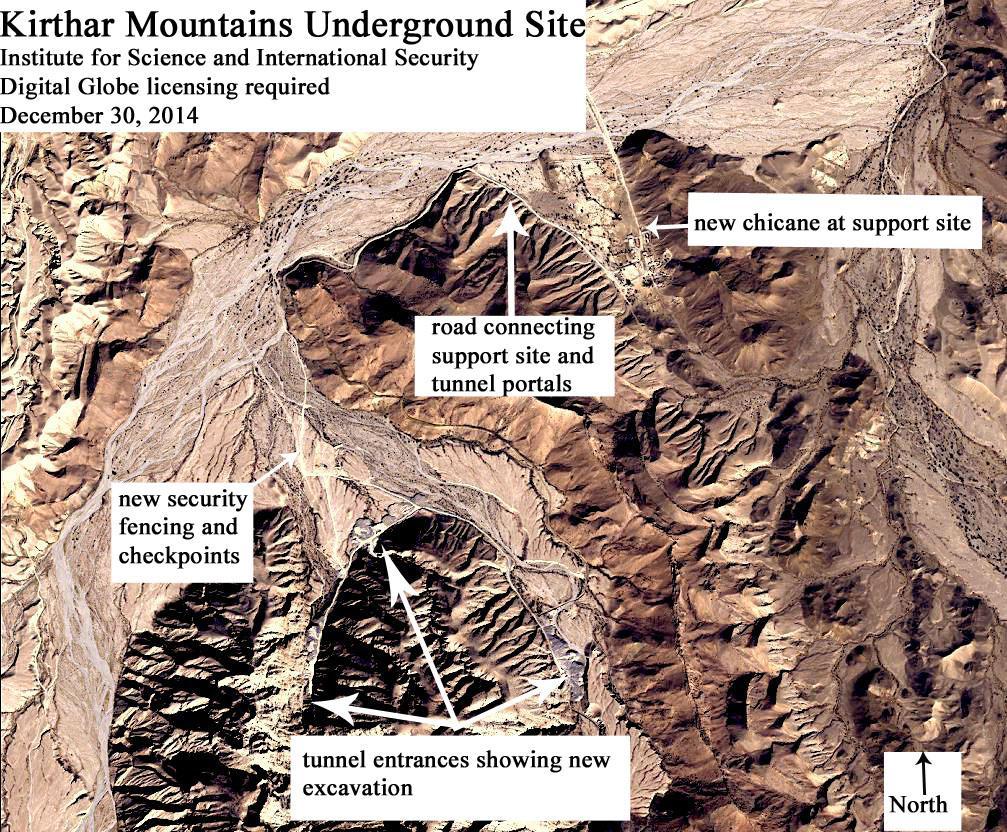

The storage site is near a Ballistic Missiles base, which first discovered by FAS, was built between 2004 and 2010. FAS and the American think-tank both believe this missile base is most-likely a storage site for ballistic missiles and their transporter erector launchers (TELS). The missiles base site lies south of several military related facilities, which include the Khuzdar military training facility, the garrison (Khuzdar Cantonment) and a sensitive operations facility having substantial physical security.
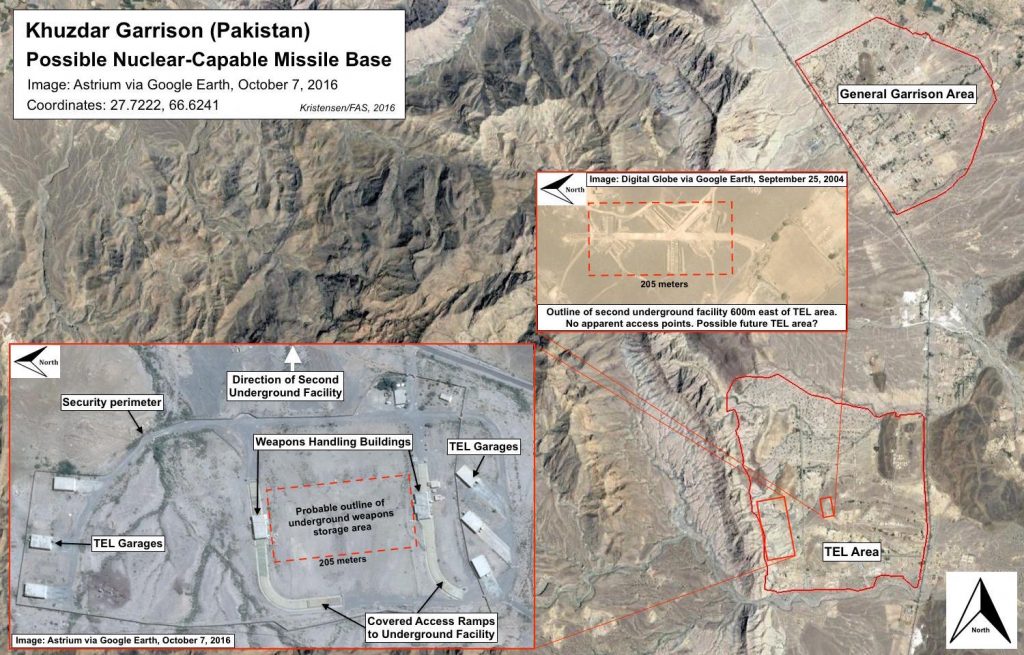
There is a high voltage power line that begins near the general garrison area and goes near the underground mountain site. The power lines continue into a very remote area and it is reasonable to speculate, that the power lines provide electricity to the mountain facility.
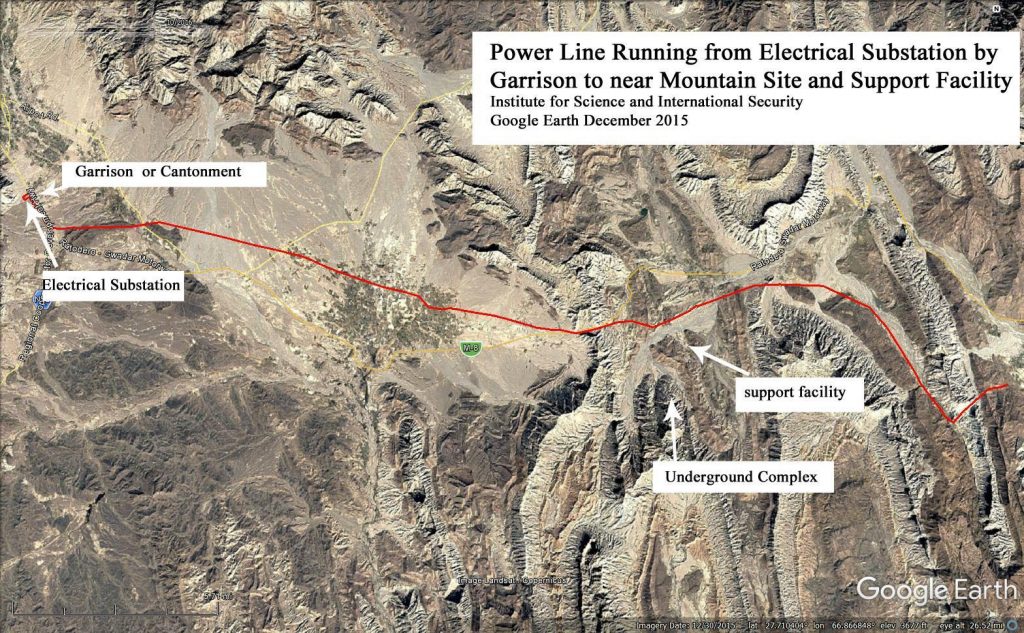
The Institute for Science and International Security has identified three tunnel entrances or portals to the underground site located in Kirthar mountains, two of which were at the coordinates provided by the journalist. This hardened underground site has three distinct entrances and a support area.
The think-tank believes construction at the site began between 2009 and 2010 and continued over the next couple of years. The support area is directly connected to several tunnel entrances by a single unpaved access road. The three identified portal entrances are large and they can accommodate the largest possible vehicles.
The institute also observed considerable increase in the security on the site in 2014 compared to 2011. There is no information available publicly about the site. However, it appears to have been constructed as a hardened storage site for strategic reserves and hence a means of protecting a counter force nuclear strike capability. The site serves as an ideal storage site for part of Pakistani’s nuclear arsenal as Pakistan’s preferred delivery vehicle for nuclear weapons is missiles with warheads. Although the site is in the province of Balochistan, which has endured many local insurgencies, Pakistan is likely more focused on having a secure area in a remote mountainous area as far as possible from its international borders, including India.
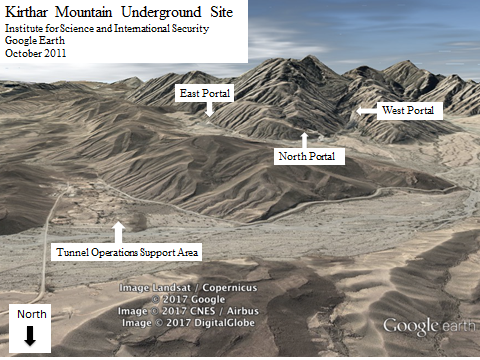
Famous Baloch leader Dr Allah Nizar had tweeted about Pakistani activities in the region in October 2016. Between 19 and 22 October 2016, the Baloch leader claimed in different tweets that Pakistani forces have evicted local population from an area called Saasol near Khuzdar. He had also stated that Pakistan has shifted its nuclear arsenal to Khuzdar.
1/2. Pakistan has shifted its nuclear arsenal to Khuzdar Balochistan – in an area called Saasol. Its local population has been evicted.
— Allah Nazar Baloch (@DrAllahNizar) October 19, 2016
2/2. The Saasol hills were dug for the purpose nearly a decade ago. Launching pad & a large airbase have also been built there.
— Allah Nazar Baloch (@DrAllahNizar) October 19, 2016
PakistanArmy's issued evacuation notices to the people in between Zedi & Karkh, Khuzdar Balochistan for the security of its nuclear arsenal.
— Allah Nazar Baloch (@DrAllahNizar) October 22, 2016
The recently published investigation and report by Institute for Science and International Security confirms claims of Baloch leader.





